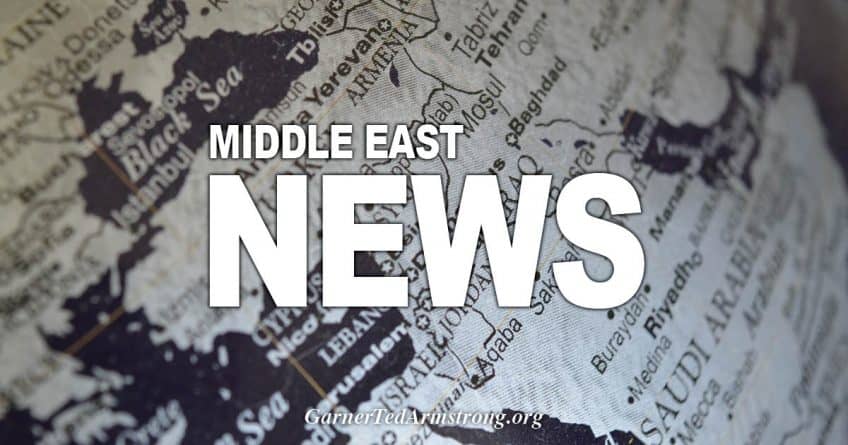Israel’s coordination with Russia and Jordan in solving the Syria crisis makes it an indirect partner of the Assad regime, one that it won’t try to topple.

Gil Eliahu
Israel’s extraction of the 800 members of the White Helmets humanitarian organization from southern Syria into Jordan came just in time. Concerns that they would be massacred by the Assad regime’s soldiers, who had taken over much of the south and were advancing toward the separation line in the Golan Heights, left a very small window of opportunity. The operation saw cooperation among the Israeli army, Jordan, the United States and other countries, as well as the Knights of the Golan, a Syrian militia supported by Israel.
One concern was that hundreds of refugees who had fled villages in the Syrian Golan and were now near the fence would disrupt the operation. But after the evacuation agreement between Syria, Russia and rebel militias, the rebels abandoned the area and the refugees returned to their homes Thursday and Friday. Thus by Saturday there were no refugees on the border.
>> Israel evacuates members of White Helmets rescue group from Syria ■ Netanyahu reveals who asked Israel to take White Helmets out of Syria
“The whole area emptied out in one day,” a Druze resident of the Golan told Haaretz. “Everybody left at once. Now we’re waiting for the UN forces to return to their camp in two days.”
The concern for the lives of the White Helmets was justified. The group, which was started in 2012 by volunteers from areas taken over by the rebels, had 2,000 volunteers by 2014, including dozens of women. It received about $30 million a year from the United States, the Gulf states and international aid groups. It says its members, risking their lives, have saved more than 80,000 people, perhaps more than 90,000.

Gil Eliahu
Among its efforts, the group freed people from buildings destroyed by the Syrian army and the Russian air force, and aided the wounded in places where no other aid was available.
The White Helmets did not hesitate to report on the horrors of the war, including the use of chemical weapons and barrel bombs that killed thousands of people. They posted videos that showed the cruelty of the regime’s soldiers and the pro-Iranian militias, drawing the ire of the authorities and Iran, which spread rumors that the group was working with terror organizations.
Israel’s part in the rescue of the White Helmets activists, which included a pledge by Western countries to naturalize them after they leave Jordan shortly, is a very important gesture, but it’s not enough. The lives of thousands of people who have come under the control of the Syrian army in recent days are still in danger. They won’t be able to flee to Jordan, which is preventing the entry of refugees and is demanding that the refugees on its border return home now that the Syrian army has taken most of the border areaon the other side.
The next phase is to deploy Syrian forces along the separation line and bring back the UN observers. The Syrian 90th and 61st brigades and the Russian military police are set to deploy as far as the separation line. This will be done after the militias leave the area for the city of Idlib, though anyone who agrees to disarm can remain.

AFP
According to the London-based daily Asharq Al-Awsat, the separation line will now include three strips. One closest to Israel will be demilitarized by UN forces and Russian military police. The second strip will start 10 kilometers (6 miles) into Syrian territory, with 350 Syrian army tanks and 3,000 soldiers armed with light weapons. In the third strip, the army will be able to deploy 650 tanks, 4,500 soldiers and limited-range artillery.
The agreement between Israel and Russia also includes permission for the Syrian army to operate against the Islamic State, which is still in the Yarmouk River basin, but Syrian troops will have to return to their bases when the fighting is over. The Russian forces will hold Tel al-Harra – at 1,200 meters (3,937 feet) above sea level the highest of the hills overlooking the Golan. From there they will be able to monitor implementation of the separation-of-forces agreement.
The Knights of the Golan militia will still be able to operate in the separation zone. According to a report in January on the news website The Intercept, the Knights received aid, weapons and training from Israel. The group’s Facebook page shows a militiaman loading a pickup truck with food boxes marked with the logo of the Israeli company Tnuva, while that of another company is stamped with the Hebrew for “kosher.”
According to The Intercept, the militia was designed to operate in the Syrian Golan, à la the South Lebanon Army that Israel founded back in the day, to stop pro-Iranian forces from entering the area. By providing humanitarian aid to the group, Israel intended to gain military access to the Syrian Golan.

Gil Eliahu
According to a Syrian source who spoke to The Intercept, the militia first opposed Israeli involvement, but people began to feel positive about Israel, which was paying them salaries and giving them medicine, food and water.
The new agreement on the deployment of Syrian forces in the Syrian Golan lets the militia operate in the demilitarized zone on condition that it not clash with the Syrian forces. A similar arrangement prevails in the Beit Jann area, where militia forces that are coordinating with Israel are operating under the command of a leader known as Moro.
According to these reports, it seems Israel’s involvement in Syria is much deeper and broader than what has been called defined as “humanitarian aid.” Military coordination between Israel, Russia and Jordan, Israel’s involvement directly or indirectly in discussions on Russia’s plans for alleviating the Syrian crisis, and Israel’s ability to influence tactical moves in the Golan make it an indirect but significant partner of the Assad regime, which can now rest assured it’s in no danger from Israel.










